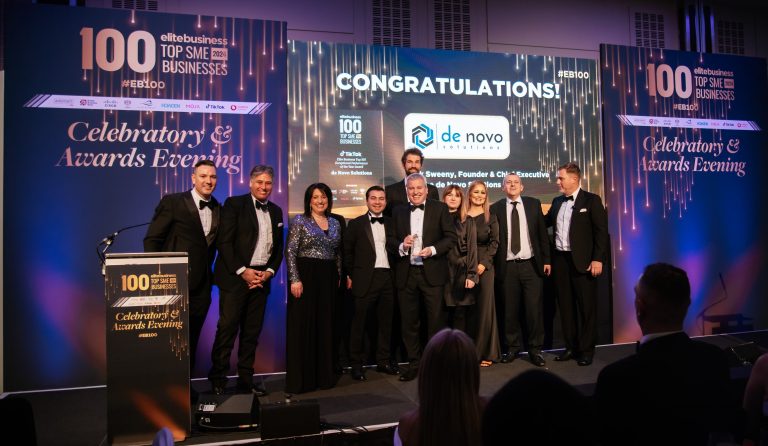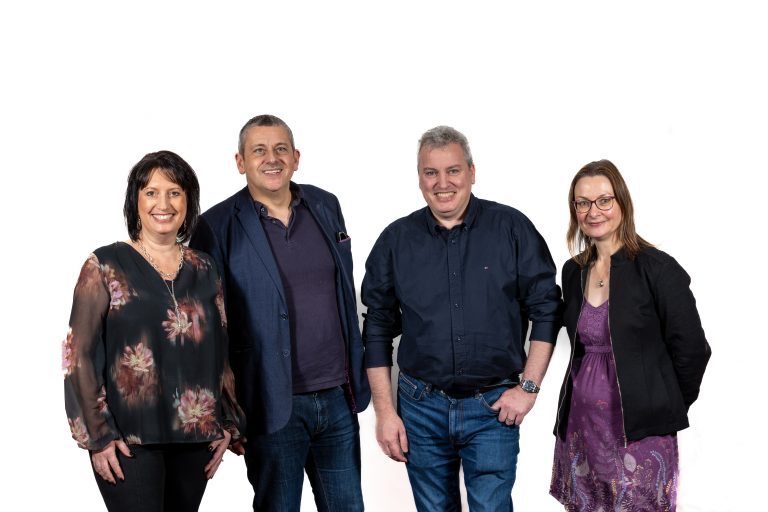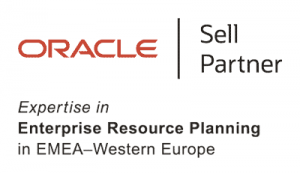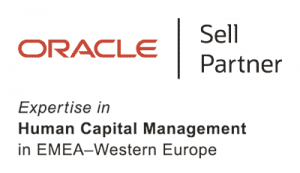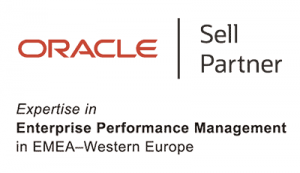Published on November 27, 2019
Some People Just Don’t Want to Be Transformed…
Experience in sales usually comes from one’s ability to read people within the first 30 seconds into the opening salvo of “discovery” questions, whilst working out simultaneously if there is real interest in the conversation rather than just having a meeting exchanging pleasantries. Body language being the key indicator as you cast your lure to see if the prospect is actually going to bite whilst delivering that important open question, followed by a moment of silence, which hopefully prompts an information download in return.
When it comes to the world of digital the word “transformation” usually follows in the same sentence. Both front and back office Cloud Software as a Service (SaaS) based applications have the power to drive permanent change and can positively disrupt the way organisations work as they impact on underlying business models. Throw in some AI, RPA and whatever the current flavour of the month is (acronyms that are now banded around on a daily basis) and with a clever manipulation of an Excel spreadsheet your ROI in such a venture is going to go off the scale. Happy days!
However, there is one major problem and its simply that your prospect’s people don’t want to be transformed – how dare they!
Human Behaviour – It’s in our DNA
Your prospect may say they want to transform the organisation and may even be working on that very business case that is going to return hundreds of ROI percentage points in tangible (cashable) and intangible benefits to support their vision of a brave new world. However, the reality is they really like the status quo and the way of doing things, why? because “Change is Hard!”.
People that like change are, in my experience, very much in the minority. (Exclude entrepreneurs here as we are generally on a mission to disrupt the status quo for the better regardless and the fact that you don’t find many entrepreneurs working inside large organisations as they are often the most unemployable type of people that exists. Anyway, I digress; that’s for another blog on another day).
Basic Human DNA is that when we are comfortable and happy the last thing we want is somebody coming along and up-setting the apple cart. Remember Maslow’s Hierarchy of Needs? well its true today as it was in 1943 when he came up with it. Mess with the basis of our emotional state and the unpredictable or in this context the predictable happens – instant subconscious resistance to change.
From a sales perspective again experience usually allows you to identify this within that very first sales call. It is at this point you have to decide your strategy and tactics moving forward to achieve a close. The danger being that you close a sale upon the false emotional context of the buyer. Congratulations on the sale, however this only sets the ensuring engagement up for immediate failure as both buyer and supplier expectations are instantly out of alignment regardless of what it says in the contract. Instead of having the foundations of success, you have the foundations of a fractious relationship.
What do People really want? The thing they value the most – their time!
Most of us just want an easy life and most people don’t want to change the world. Those that do embark on that journey start by understanding that they usually need to change one’s self first. Change is hard; it introduces risk; it can be unpredictable; your job can change & even worse disappear; and change is not always for the better.
However, people are genuinely receptive to a positive “experience”, especially one that makes their lives easier. Think about it. Why would you not be receptive to something that makes your life easier? It is quite possible to use the new innovative technologies that are now available to deliver new “experiences” without having to transform one’s entire world. Believe it or not you can even deliver new experiences without technology simply by stopping doing unproductive irrelevant tasks that most of us undertake on a routine basis.
It is equally possible to deliver enough of these new experiences that over time you transform an organisation’s world by stealth by changing people’s mindset and behaviour incrementally. A positive experience will resonate and open an individual’s mind to something new. A negative experience will naturally have the opposite effect. More importantly they will remember both.
At this point everyone says “thank you for telling us the obvious”, however brand loyalty is built through customer advocacy – the most powerful type of marketing that exists. It creates the holy grail; eutopia; the universal panacea that we all crave for as it underpins success through repeat business by returning happy customers. Undertaken correctly you create the snowball effect for greater product/service demand and consumption. You would be surprised just how many people don’t understand this fundamental business concept.
From Front Office to Back Office
The last decade has seen digital disruption in the front office take a grip and you only have to look at the likes of Adidas and Nike who create as much as possible an immersive customer experience through their online shop windows as they do in their physical stores. They are no longer just retail companies but technology companies in their own right.
What is now taken for granted as a way of doing business directly with consumers is now targeting employees inside these businesses. Happy employees make happy customers. A positive mindset and behaviour promote superior customer service, creating positive experiences.
In the context of a people dynamic at work we can answer the question simply through this equation:
What do People really want? = Positive Experiences that Creates Time
The most valuable thing we all possess is our time. The one thing we all have in common is that everyone’s time is limited and the cliché quote “time is money” is absolutely spot on. We all need to use our time wisely.
In the workplace we want employees to feel they are valued and too achieve that we want them spending their time doing purposeful work that adds value to the business and that usually means people using their time to interact and collaborate with other people. The social and behavioural elements of work cannot be under-estimated. Part time Mum’s and Dad’s often return to work, not just out of the necessity to earn a wage, but because work provides an environment that provides social interaction with others. Intelligent and stimulating conversation, problem solving, and making a difference, being proud are all characteristics that help us make us feel valued.
The mundane, but absolutely necessary, back office processes need to be executed easily and quickly, in doing so this drives down the costs of operation whilst maintaining control. Result “Better, Cheaper, Faster” executed – the best business strategy ever created fuelled by happy employees who are focusing on using their time to create value, rather than wasting it in the back office.
So how can Technology play its part in Creating Time?
Stephen R. Covey say’s “The key is in not spending time, but in investing it”. How do we achieve that? by creating positive time saving employee experiences.
Things are moving fast in tech as I stated in one my recent blog “The Experience Economy” (https://www.linkedin.com/pulse/welcome-experience-game-mark-sweeny/) the technology industry has already jumped aboard this ship turning its attention to the employee experience in the back office with the differentiator of data driving experiences and not process.
Imagine the day when you log on to the company work portal, and the technology based upon your individual behaviour (and even one day your emotional state of mind!) has already worked out the working day – prioritised the mundane back office tasks; informed you of things you must address; even setup meetings automatically and ensured that any “industry breaking news” of interest you are made aware of. In doing so it creates a personalised experience.
We now square the circle in terms of argument and end back up in the 1990’s around the “efficiency v effectiveness” debate, but this time it’s not about the process but rather about an individual’s time delivered through personalised positive experiences at work. The additional benefit possibly being greater work-life balance, allowing even more leisure time that allows for focus with family and friends. Isn’t that’s what life is really about?
Help the Buyer, Be the Honest Broker and Change the Conversation…
Final words of advice – always help the Buyer, especially if they can’t find their way through their own “transformation” strategy let alone their buying process. If you detect that the Buyer isn’t being honest with themselves about their stated intentions – help them, even to the extent of pushing the issue by painting them a different picture that achieves the outcomes they are striving for without having to turn their world completely upside down. Change the conversation.
Full Digital Transformation (as Consultants know it) in the context of the back office is not always the answer and even if it is it, cannot be done overnight and realistically takes between 18 months to 3 years to do it properly. It is also hard work. Winning hearts and minds is never easy. However, using technology to create new experiences can be done today more quickly it just takes creativity, technology innovation and will power to make it happen.
We are now living in a world where experiences are personalised over standardised processes. Remember long-term value isn’t necessary in standardised process but in the experience that gives back that most precious of assets – “our time”.
Views? discuss and comment. As always, I look forward to hearing other’s perspectives…
#entrepreneur #entrepreneurs #cloud #cloudwars #digital #digitaltransformation #saas #transformation #change #changemanagement
Disclaimer: This is a personal blog. The opinions expressed here represent my own and not those of my employer. In addition, my thoughts and opinions change from time to time and I consider this a necessary consequence of having an open mind. This blog is intended to provide a semi-permanent point in time and as such any thoughts or opinions expressed within out of date posts may not be the same or similar to those that I hold today.



